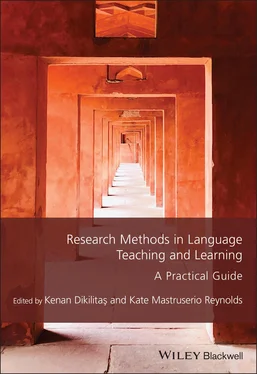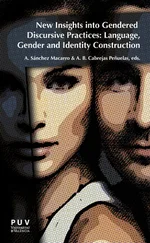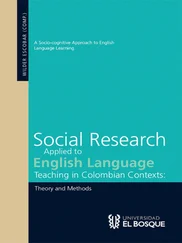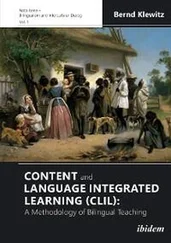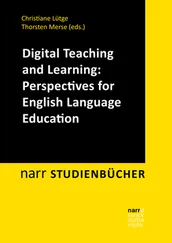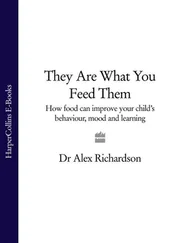Research Methods in Language Teaching and Learning
Здесь есть возможность читать онлайн «Research Methods in Language Teaching and Learning» — ознакомительный отрывок электронной книги совершенно бесплатно, а после прочтения отрывка купить полную версию. В некоторых случаях можно слушать аудио, скачать через торрент в формате fb2 и присутствует краткое содержание. Жанр: unrecognised, на английском языке. Описание произведения, (предисловие) а так же отзывы посетителей доступны на портале библиотеки ЛибКат.
- Название:Research Methods in Language Teaching and Learning
- Автор:
- Жанр:
- Год:неизвестен
- ISBN:нет данных
- Рейтинг книги:5 / 5. Голосов: 1
-
Избранное:Добавить в избранное
- Отзывы:
-
Ваша оценка:
- 100
- 1
- 2
- 3
- 4
- 5
Research Methods in Language Teaching and Learning: краткое содержание, описание и аннотация
Предлагаем к чтению аннотацию, описание, краткое содержание или предисловие (зависит от того, что написал сам автор книги «Research Methods in Language Teaching and Learning»). Если вы не нашли необходимую информацию о книге — напишите в комментариях, мы постараемся отыскать её.
Research Methods in Language Teaching and Learning
Research Methods in Language Teaching and Learning
Research Methods in Language Teaching and Learning — читать онлайн ознакомительный отрывок
Ниже представлен текст книги, разбитый по страницам. Система сохранения места последней прочитанной страницы, позволяет с удобством читать онлайн бесплатно книгу «Research Methods in Language Teaching and Learning», без необходимости каждый раз заново искать на чём Вы остановились. Поставьте закладку, и сможете в любой момент перейти на страницу, на которой закончили чтение.
Интервал:
Закладка:
A second and related hypothesis that fed into the theoretical sampling (Silverman, 2010) was that teachers who were planning to research their own practice through conducting action research (Burns, 1999) might, through engaging in processes such as reflection and experimentation, experience the kind of growth in practical knowledge and TSE beliefs that I was particularly interested in investigating. My final selection was therefore of teachers who were planning action research. Implicit in the above hypothesis, however, was a further hypothesis, that the change that would occur was positive, that the BA TESOL would support teachers to become more learner-centered, with a somehow deeper “moral, affective and aesthetic way of knowing” (Golombek, 1998, p. 449). It seemed necessary to test this hypothesis by choosing “a deviant case” (Silverman, 2010), one that did not seem to be following that pattern, to gain a richer, deeper understanding of the theory. Considering this, I was conscious from observations and interviews conducted during the second year of the program that one of the teachers I was investigating was possibly not developing in the expected direction. This teacher was amongst those five finally retained.
Collecting and Analyzing Data, and Writing up the Research
In collecting data, I employed the three key methods discussed by Stake (1995) that are characteristic of qualitative case study research: observations, in which my own role was as a “non-participant observer” (Cohen et al., 2011); semi-structured interviews (Kvale, 1996); and documentary analysis. I used these methods as follows.
While observing in schools, I kept an open narrative record, jotting down descriptive notes relating to actions and reactions, movement, words spoken by teacher and learners, and written on the whiteboard; this commentary was punctuated occasionally by exclamations and questions to remind me of key incidents later. Post-observation discussions were held immediately afterwards in the quietest room we could find and audio-taped on micro-cassette with the teacher’s permission. I elicited feelings about the lesson, memories, reactions, highlighting key incidents and inviting reflection on them, teasing out evidence, encouraging links to public theory and summarizing. While we talked, I added to observation notes, in different colored ink, as exclamations and questions were dealt with. Next, I had prepared questions relating specifically to my research to ask, these generally having arisen from data analysis, reading since the last interview, theorizing, and reflection. I approached this semi-structured phase flexibly, in terms of the order in which questions were asked and the way in which topic areas were explored through follow-up questions, aiming to follow “quality” procedures (Kvale, 1996).
I also analyzed documents, chiefly the teachers’ written assignments, many of which encouraged both engagement with theory and reflection on the planning, implementation, and evaluation of tasks, materials, and activities. These documents included action research dissertations and earlier proposals for these. Analyzing these documents allowed me to compare the participating teachers’ written words with their observed actions and their reports in interview, which would facilitate not only “methodological triangulation,” but also “data source triangulation,” since I would be able to explore changes over time (Stake, 1995).
The data analysis, which was “interactive” and “iterative” (Lincoln & Guba, 1985), informed successive rounds of data collection, and progressed through stages. Observation notes were written up within a few hours, as Stake (1995) recommends, and audio-recorded interviews were also quickly transcribed. This enabled me to use the data “to think with” (Hammersley & Atkinson, 1995). I coded in relation to my research questions, reading and rereading the corpus of data, revised research sub-questions in relation to each teacher to cover emerging patterns and themes, and created categories. I then adopted a “template approach” (Robson, 2002), with key codes, determined by research questions and sub-questions, serving as a template into which coded text segments were placed, which created a matrix. This allowed for the data to be read in a way that facilitated the move from coding to interpretation.
This analytical process supported the making of “thick description” (Geertz, 1973), which involved selecting, organizing, and presenting “interconnected data” (Holliday, 2002) in a way that aimed to support vicarious experience. The narratives I developed, drawing on the different sources of interconnected data, aimed to render the concrete particularities of experience immediate and employ verbal imagery that appealed to the senses (Clandinin & Connelly, 1990). Feedback on draft narratives from PhD supervisors and a critical friend familiar with the context, who together could supply a degree of “investigator triangulation” (Stake, 1995), suggested a need for more analytical commentary to be woven into the writing, which I supplied. I subsequently engaged in “member checking” (Stake, 1995), sharing drafts with research participants, achieving, through this process, a degree of pragmatic and communicative validation (Kvale, 1996). For example, in one case, not only could the research participant
confirm that the story was accurate, but in the way he engaged with it he assumed a kind of ownership for it. He developed, too, not just his understanding of research as he discussed the text with me, but the member checking process also seemed to heighten his awareness of his own development.(Wyatt, 2008, p. 67).
However, a methodological limitation was that I was unable to conduct meetings for the purpose of “member checking” with all the research participants; the schools were closed in July 2006 when I was doing this, and for cultural reasons I could not have met the female research participants in other locations. They were nevertheless sent drafts, with invitations for written comments, and I received some feedback.
The Findings of the Study and How These Findings Have Been Shared
The findings of my PhD research into the developing practical knowledge and TSE beliefs of five Omani in-service teachers of English were presented as five, approximately 10,000-word, case studies distinguished by “thick description” (Geertz, 1973), each focused on a different teacher and with a different theme. The themes, all subsequently explored in different articles organized as individual case studies, included: using communicative tasks to develop speaking skills (Wyatt, 2009); enhancing motivation through materials design (Wyatt, 2011a); helping learners to overcome difficulties in reading (Wyatt, 2012); developing reflective practice as teacher (Wyatt, 2010a) and mentor (Wyatt & Arnold, 2012); and supporting low achievers in group work activities (Wyatt, 2010b). Another individual case study, which focused on one of these five teachers’ efforts to overcome low TSE beliefs in adjusting to the task of teaching primary as opposed to secondary school learners as a result of curriculum changes (Wyatt, 2013a), was developed from a sub-theme within the thesis (Wyatt, 2008). Comparative studies of two to five teachers (e.g., Wyatt, 2011b, 2013b; Wyatt & Borg, 2011) also emerged from the data-rich thesis; these studies tended to focus less on overarching themes than on particular dimensions of change, such as the impact of engaging in action research (Wyatt, 2011b). More theoretically based papers, including meta-analyses (e.g., Wyatt, 2014, 2016), additionally sprang from the original study (Wyatt, 2008), which has inspired my continuing work in this research area, including the exploration of language TSE (LTSE) beliefs as a distinctive emerging field (e.g., Wyatt, 2018a, 2018b; Wyatt & Dikilitaş, 2019).
Читать дальшеИнтервал:
Закладка:
Похожие книги на «Research Methods in Language Teaching and Learning»
Представляем Вашему вниманию похожие книги на «Research Methods in Language Teaching and Learning» списком для выбора. Мы отобрали схожую по названию и смыслу литературу в надежде предоставить читателям больше вариантов отыскать новые, интересные, ещё непрочитанные произведения.
Обсуждение, отзывы о книге «Research Methods in Language Teaching and Learning» и просто собственные мнения читателей. Оставьте ваши комментарии, напишите, что Вы думаете о произведении, его смысле или главных героях. Укажите что конкретно понравилось, а что нет, и почему Вы так считаете.
